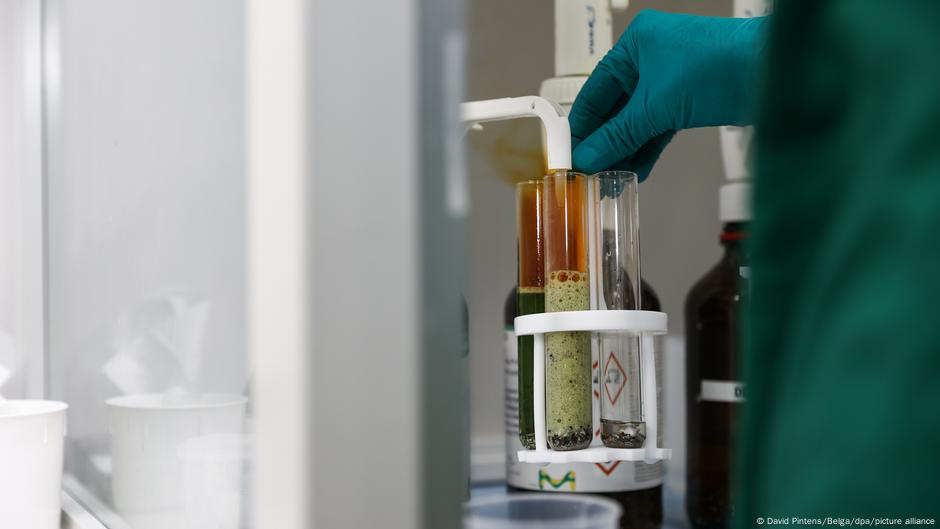
The Global Crisis of Forever Chemicals
Hazardous chemicals are contaminating drinking water, soil, and food across the globe. These so-called "forever chemicals" have become a serious environmental and health issue. A recent court case in Rome has brought attention to this problem, highlighting the consequences of contamination caused by these persistent substances.
Trissino, a quiet town nestled at the foot of the Italian Alps, is surrounded by lush fields and small industrial plants. Despite its peaceful appearance, the region has been found to be heavily contaminated with toxic chemicals from a local chemical facility. In 2021, an investigation revealed that the contamination had affected large parts of the area's drinking water and soil. Eleven individuals, including employees of companies such as the Japanese Mitsubishi Group and Luxembourg-based Chemical Investors, were sentenced to prison for their roles in the pollution.
According to estimates from non-governmental organizations, approximately 350,000 people in the Veneto region of northern Italy could be affected by the contamination. This case underscores the global nature of the problem, as PFAS (perfluorinated and polyfluorinated alkyl substances) continue to spread across the world.
What Are Forever Chemicals?
PFAS are a group of synthetic chemicals known for their extreme persistence in the environment. Once released, they do not break down easily and can remain in the ecosystem indefinitely. Scientists have linked exposure to PFAS with various health issues, including liver and kidney damage, increased cholesterol levels, lymph node diseases, and reduced fertility in both men and women. The German Federal Environment Agency has also reported that PFAS can lead to low birth weights in babies, reduce the effectiveness of vaccinations, and cause cancer when present in high concentrations.
These chemicals are now considered a global concern. Studies have shown that PFAS can be found almost everywhere, from human blood to breast milk. For example, a 2018 study by Harvard University found that 98% of U.S. citizens had PFAS in their bloodstream. Similar findings have been reported in countries like India, Indonesia, and the Philippines, where PFAS was detected in nearly all breast milk samples tested. In Germany, every child has traces of these chemicals in their bodies, with a fifth exceeding critical levels.
From the Atom Bomb to Everyday Products
PFAS were first discovered in 1938 by the American chemical company DuPont. Initially used in the development of the atomic bomb due to their ability to protect metal from corrosion at high temperatures, these chemicals later found their way into everyday life. Under the brand name "Teflon," PFAS became widely used in non-stick cookware, marking the beginning of their commercial rise.
Their unique properties—resistance to heat, water, and dirt—have made them valuable in a wide range of products. They are found in waterproof clothing, cosmetics, stain-resistant carpets, medical devices, semiconductors, and even wind turbines. However, the widespread use of PFAS has led to significant environmental and health concerns.
Once ingested through drinking water or food, PFAS accumulate in the body over time. They can be detected in blood, breast milk, and even hair, highlighting their pervasive presence in human systems.
Decades of Concealing the Danger
The dangers of PFAS have been known for decades, yet many companies have continued to release them into the environment. In 1998, a tragic incident near Parkersburg, West Virginia, exposed the risks of these chemicals. A hundred cows died after coming into contact with a leaking dump site containing PFAS from a DuPont factory. It was later revealed that thousands of people in the area had been contaminated by wastewater from the facility.
Internal documents showed that DuPont had been aware of the dangers for years but continued to discharge PFAS into the environment. Studies suggest that high levels of PFOA, a specific type of PFAS, were linked to cases of kidney and testicular cancer in the region. In 2017, DuPont and its spin-off company Chemours agreed to pay $671 million in compensation to 3,550 affected individuals.
Global Efforts to Address the Problem
Despite growing awareness, PFAS continue to be released into the environment. In the United States, the Environmental Working Group (EWG) estimates that nearly 10,000 locations are contaminated with PFAS, affecting around 160 million people nationwide. In Europe, 23,000 sites are known to be contaminated, with 2,300 of them posing a significant health risk.
In France, authorities have warned residents in Alsace not to drink tap water due to elevated levels of 20 different PFAS chemicals. In Georgia, a lawsuit is ongoing against Chemours and 3M, with residents fearing illness due to PFAS contamination.
Legally binding limits for six PFAS chemicals in drinking water were introduced under former U.S. President Joe Biden, although the Trump administration reversed four of these regulations. In 2023, 3M agreed to pay around $10 billion to local water suppliers to settle lawsuits related to PFAS pollution. The company is also facing legal action in the Netherlands, where it operates.
The European Union has taken steps to address the issue by passing legislation aimed at reducing PFAS use. The goal is to completely phase out these chemicals in the long term, with exceptions allowed only for essential products such as medical devices. This marks a significant step toward addressing one of the most pressing environmental challenges of our time.


Posting Komentar